The idea of Scandinavia could conjure up a variety of images for many people: frigid weather, bearded Vikings, the northern lights, and pickled herring, to name a few. But what exactly are the Scandinavian countries? And is there a difference between them and Nordic countries?
In this post, we’ll take a closer look at the region by identifying which countries belong to Scandinavia, basic information on each country, and a map of Scandinavia and the Nordic countries.
List of Scandinavian Countries
As is the case with many regions that take into account geographic, political, historical, and cultural aspects, there isn’t a universally agreed-upon definition of Scandinavia. By far the most common description, however, is that it consists of three countries: Denmark, Norway, and Sweden.
| Country | Population 2022 | Area | Capital |
|---|---|---|---|
| 🇩🇰 Denmark | 5,883,445 | 42,933 km2 (16,577 mi2) | Copenhagen |
| 🇳🇴 Norway | 5,435,947 | 385,207 km2 (148,729 mi2) | Oslo |
| 🇸🇪 Sweden | 10,551,863 | 450,295 km2 (173,860 mi2) | Stockholm |
These three countries are closely linked in terms of shared language, culture, and history; they are highlighted in the map of Scandinavian countries below.
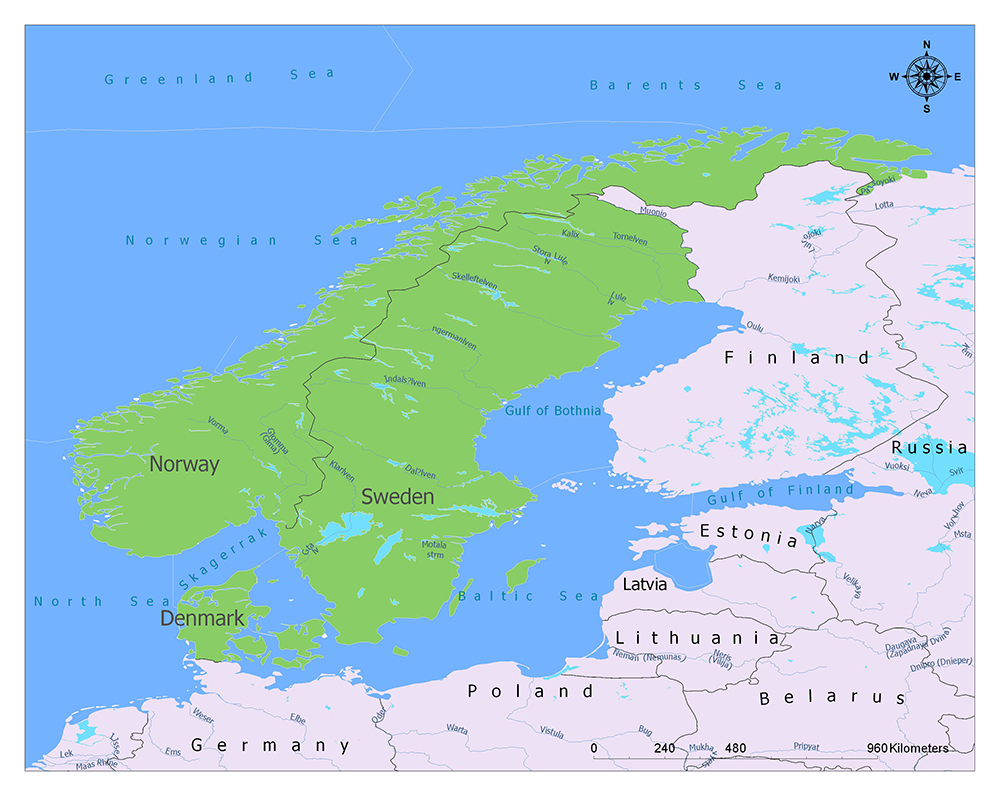
Denmark
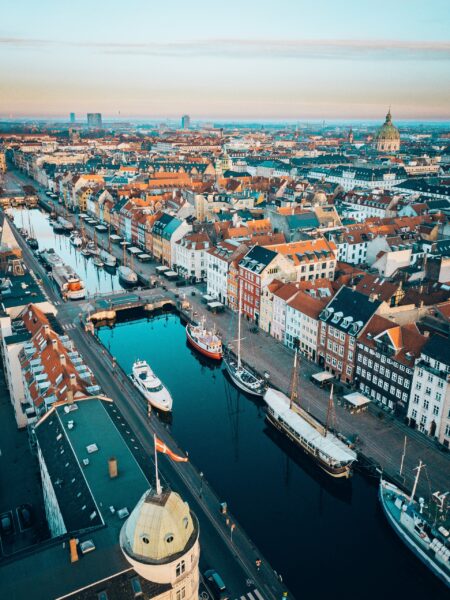
- 2022 Population Estimate: 5,883,445
- Total Land Area: 42,933 km2 (16,577 mi2)
- Capital: Copenhagen
Denmark is a country located in Northern Europe that shares a land border with Germany and is connected to Sweden via the Öresund Bridge. Its territory is nearly 43,000 square kilometers and it spans the Jutland Peninsula as well as an archipelago of 443 islands. It is the smallest and southernmost Scandinavian country (when not including the Faroe Islands). The landscape of Denmark is mostly flat with low elevation, arable land, and a temperate climate, meaning it experiences distinct seasonal weather changes.
Mainland European Denmark is part of the Kingdom of Denmark, which includes the autonomous territories of Greenland and the Faroe Islands. While it isn’t officially declared, Danish is the de facto national language of Denmark. It is a North Germanic language related to Icelandic, Faroese, Swedish, and Norwegian. Danish, Norwegian, and Swedish share some mutual intelligibility.
Culturally, Denmark has a reputation for being socially progressive. It was the first country to legalize pornography in 1969, and it allowed for gender-neutral marriages to be performed in the Church of Denmark in 1989. Denmark has been a member of the European Union since 1973.
Norway
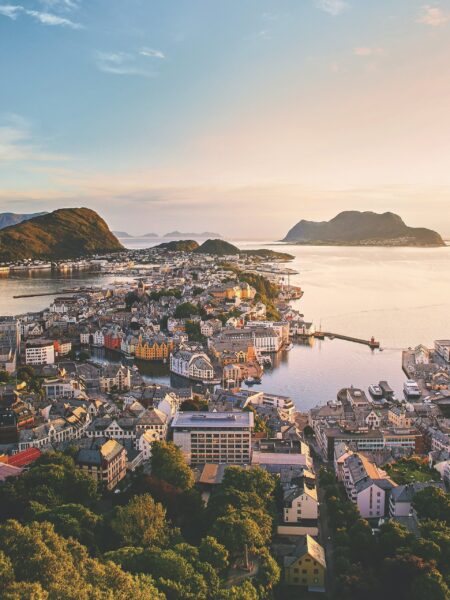
- 2022 Population Estimate: 5,435,947
- Total Land Area: 385,207 km2 (148,729 mi2)
- Capital: Oslo
Norway occupies the westernmost and northernmost reaches of the Scandinavian Peninsula. It is officially called the Kingdom of Norway, which includes Jan Mayen, a remote island in the Arctic, and Svalbard, an Arctic archipelago. Almost half of Norway’s territory exists above the Arctic Circle, though the country’s maritime climate keeps temperatures milder than those seen in similar latitudes in other countries.
According to some lists, Norway has the fourth-highest per-capita income in the world. It also has the world’s largest sovereign wealth fund as well as the highest Human Development Index ranking, which it has held since 2009. Norway has access to significant sources of oil and mineral resources, and it is the second-largest exporter of fish in the world after China.
The landscapes in Norway are some of the most beautiful in Europe, and they are a major tourist attraction. Most tourism in Norway happens between the months of May and August, with fjords, lakes, woods, and mountains being some of the most popular spots.
Sweden
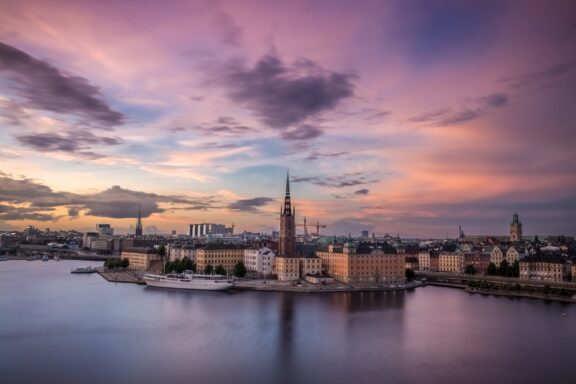
- 2022 Population Estimate: 10,551,863
- Total Land Area: 450,295 km2 (173,860 mi2)
- Capital: Stockholm
Sweden is the largest and most populous Scandinavian country. It is located between Norway and Finland on the Scandinavian Peninsula and is connected to Denmark to the south via the Öresund Bridge. It has been inhabited by Germanic peoples since prehistory, and an independent Swedish state was established in the 1100s. The country celebrated 200 years of peace in 2014 thanks to its policy of neutrality during wartime.
Approximately 65% of Sweden is covered in forests, which dominate the northern regions of the country. The southern parts of the country are largely dedicated to agriculture, and the area with the highest population density is the Öresund Region in the south.
Much of Sweden’s territory is water in the form of lakes, rivers, and canals. Vänern Lake in Sweden is the third-largest in Europe, and the Klarälven-Göta älv is the longest river that runs through Sweden. The country also borders the Gulf of Bothnia, the Baltic Sea, and the North Sea.
Other Definitions of Scandinavia
A broader definition of Scandinavia adds Iceland, Finland, and the Faroe Islands to this list of countries. Iceland and the Faroe Islands are sometimes included because their inhabitants speak Scandinavian languages (also called North Germanic) that are related to Norwegian and Swedish. Finland is sometimes labeled as Scandinavian for its geographic location and similar economy, though its language is not in the same category and shares no mutual intelligibility with Scandinavian languages.
When defining the geographic region of the Scandinavian Peninsula, Denmark is excluded from the group, and Sweden, Norway, and Finland are included.
Nordic Countries
Outside the region, it’s not unusual to hear the terms “Nordic” and “Scandinavian” used interchangeably, but they are different. The Nordic countries are located in Northern Europe and the North Atlantic and share history, culture, social structure, and religion. They consist of Finland, Sweden, Norway, Denmark, Iceland, the autonomous territories of the Faroe Islands, Greenland, and the autonomous region of Åland.
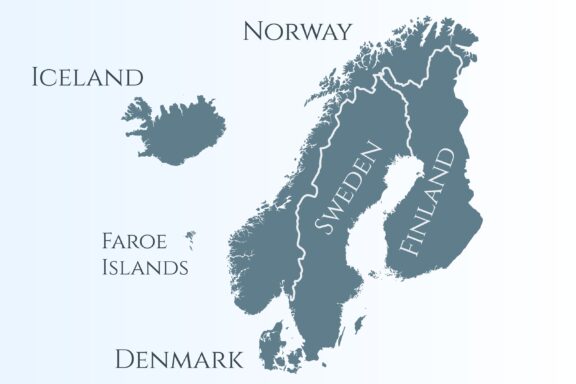
The autonomous territory of the Faroe Islands is part of the Kingdom of Denmark, though it has been self-governing since 1948. Below is a map of the islands that also displays an image of their flag.
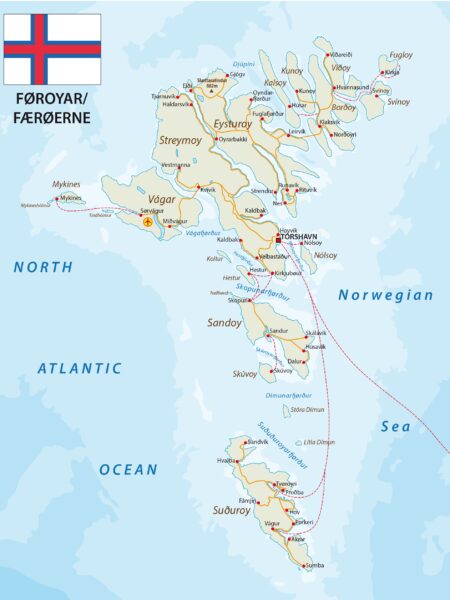
Scandinavia FAQs
Is Finland part of Scandinavia?
In its most widely used definition, Finland is not part of Scandinavia. It doesn’t share the same linguistic ties that bind Denmark, Sweden, and Norway, but it is located on the Scandinavian Peninsula.
Finland’s location and the fact that it does share some history with its neighbors means that it is sometimes grouped together with the other Scandinavian countries.
Is Denmark in Scandinavia?
Denmark is in Scandinavia. It shares a great deal of political history, culture, and linguistic ties to the other Scandinavian countries. However, when defining the geographic area of the Scandinavian Peninsula, Denmark is not included in the group and part of Finland is added instead.
How many Scandinavian countries are there?
There are three Scandinavian countries: Denmark, Sweden, and Norway. Sometimes, Iceland, the Faroe Islands, and Finland are referred to as Scandinavian countries because of their shared similarities with language, culture, location, and history, but it’s more accurate to refer to this larger group as Nordic countries.
What countries are considered Scandinavian?
Denmark, Norway, and Sweden are considered Scandinavian countries, though sometimes other countries are added to this list. When describing the Scandinavian Peninsula, a portion of Finland is added to the group and Denmark is removed. Other times, Nordic countries such as Iceland and the Faroe Islands are considered Scandinavian by some.
What are the Nordic countries?
The Nordic countries are those found in Northern Europe and the North Atlantic that share linguistic, historical, political, cultural, and social ties. They are Denmark, Sweden, Norway, Finland, Iceland, the Faroe Islands, Greenland, and Åland.
Who are Scandinavians?
Scandinavians are people of Danish, Swedish, or Norwegian descent.
Are the Faroe Islands a country?
The Faroe Islands are technically an autonomous region of the Kingdom of Denmark. The islands have been self-governing since 1948. They control most aspects of their own governance except for military defense, foreign affairs, policing, justice, and currency, which are administered by Denmark.
What is the Scandinavian Peninsula?
The Scandinavian Peninsula includes Norway, Sweden, and the northern part of Finland in the north of Europe.
Why is it called Scandinavia?
The term Scandinavia comes from a formerly Danish region called Scania that became Swedish territory in the 17th century. The native name of this region is Skåne.
Characteristics of Scandinavian Countries
Given their similarities in culture and language, geographic closeness, and the fact that they have been united under the same kingdoms at various points throughout history, there are many characteristics that are shared across the Scandinavian countries.
The People of Scandinavia
The population of Scandinavian countries is mostly characterized by positive qualities: a high level of happiness, high welfare levels, and an absence of corruption are some.
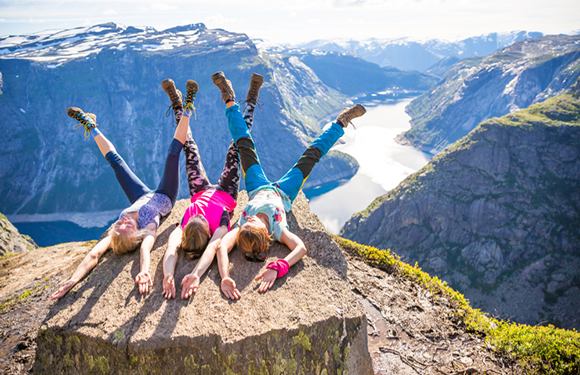
It can be difficult to qualify the level of a population’s happiness, but that’s just what the UN attempts with its annual World Happiness Report, ranking countries based on six happiness-related categories: GDP per capita, social support, healthy life expectancy, freedom to make life choices, generosity, and perceptions of corruption.
Based on these criteria, Denmark, Sweden, and Norway all ranked in the top ten in the 2022 report. Denmark was the second-happiest country, and Finland grabbed the number one spot. All three countries fare very well in the Corruption Perception Index.
The welfare levels are remarkably high in Scandinavian countries, as universal healthcare, education benefits, gender equality, and income redistribution are common qualities in these societies.
While general quality of life is very high in Scandinavian countries, it’s also true that they are some of the most expensive countries in the world. Fortunately, wages are also comparatively high.
Scandinavian Flags
Another shared feature of Scandinavian countries is their similar flags. Each of the Scandinavian countries flies a flag that features the Nordic cross.
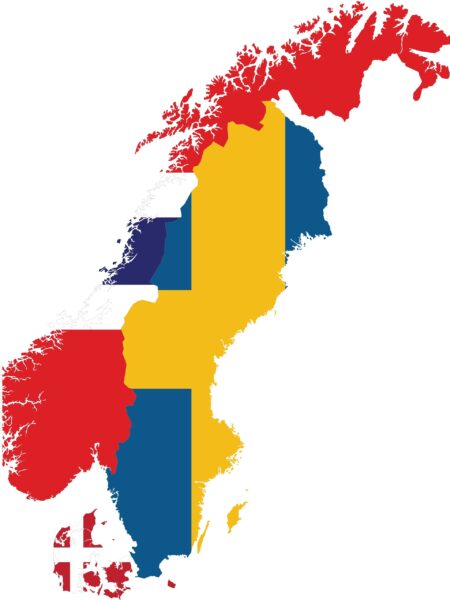
Other Nordic countries that also fly a flag of this type are Iceland and Finland. All of these countries are predominantly Christian, and this is reflected in the use of a cross in the flag.
The first use of the Nordic cross was in the Dannebrog, the flag of Denmark. This flag is famous for being the oldest continuously used flag in the world, first used in 1219. The cross on the flag represents Christianity, and the red color represents battle. It was the design of this flag that inspired similar designs in the flags of other Nordic countries.
The flag of Sweden is blue and features a yellow cross; the colors come from the coat of arms used by the Swedish Dynasty. The current design has been in use since 1906. Previously, flags were flown to represent the union between Sweden and Norway during the period from 1815 to 1905.
Norway’s flag is the only Scandinavian country flag to consist of three colors: red, white, and blue. The design of this flag was first officially adopted in 1812 and used until 1844 before being readopted in 1899.

Geography of Scandinavia
In part because the region covers such a large span of latitudes, the geography of Scandinavia is highly varied and diverse. There are also significant changes in landscape when traveling from west to east across the region.
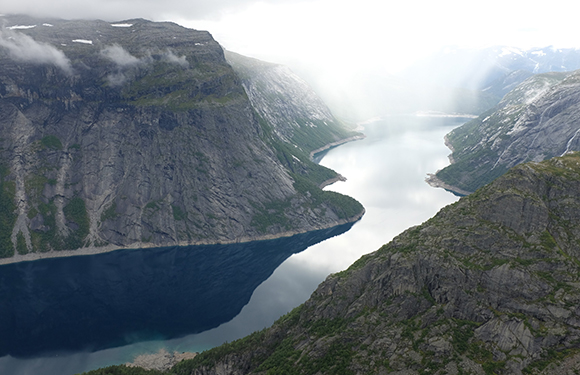
Some of the most noteworthy features of the land in this part of the world are fjords of Norway, of which there are more than 1,000, the Scandinavian Mountains that run through parts of Norway and Sweden, the archipelagos of these two countries, and the flat, low-lying land of Denmark.
The highest mountain in Norway, Scandinavia, and all of Northern Europe is Galdhøpiggen, which stands 2,469 m (8,100 ft) tall in Jotunheimen National Park. The tallest mountain in Sweden is Kebnekaise, whose summit has an elevation of 2,069 m (6,877 ft). The highest point in Denmark is at Møllehøj, which is 171 m (561 ft) above sea level.
Climate in Scandinavia
The southern reaches of Scandinavia all experience a temperate climate and are the most populated areas. The northern part of Scandinavia that extends beyond the Artic Circle experience a relatively mild climate because of the influence of the Gulf Stream.
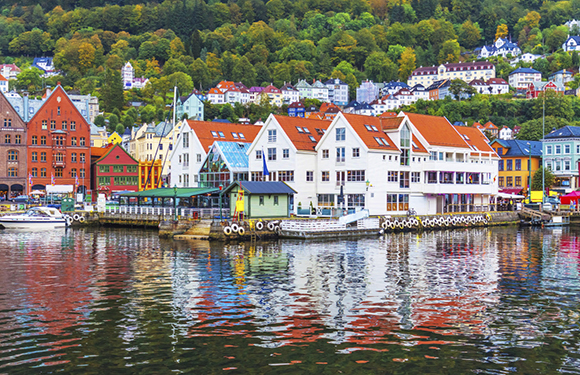
The northernmost areas in Norway and Sweden experience polar nights when there is no daylight and polar days when the sun doesn’t set. Both of these periods can last for more than a month in the furthest north regions.
Scandinavian and Nordic countries have experienced changing climates in the last century and have committed to strategies for cutting carbon usage and attempting to slow climate change. Many regions in these countries have seen an increase in annual temperatures and are expected to continue to see this trend in the future.